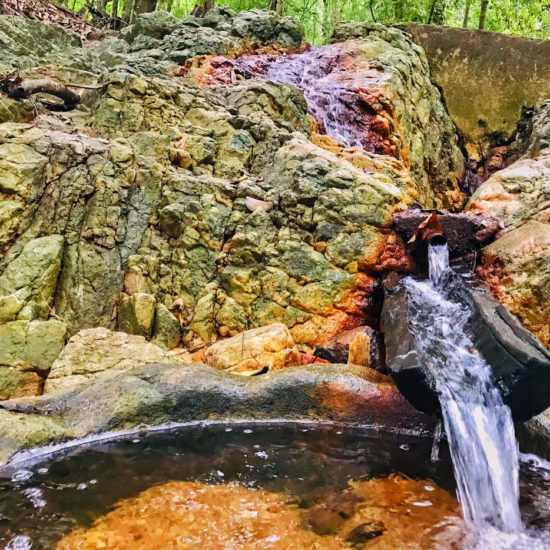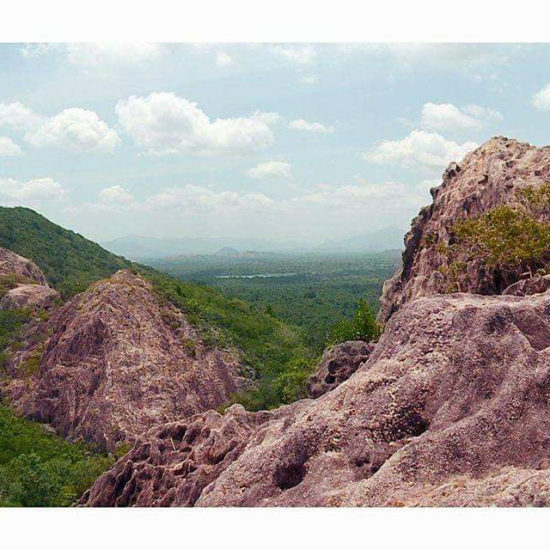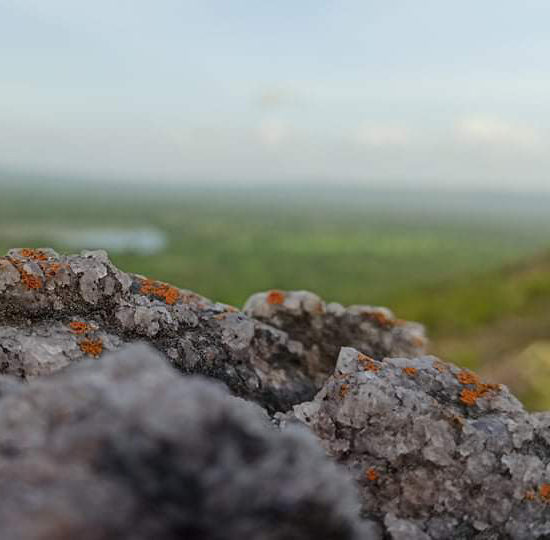Namal Uyana
per person
The “Jathika Namal Uyana” is “the largest Na-forest and pink quartz mountain in Asia”. This unrevealed unique natural heaven has been brought forward to the attention of the world almost 15 years before, by Ven. Wanawasi Rahula Thero. The Namal Uyana which is spectacular and attractive with its exceptional natural depths has a history of more than one thousand years.
According to archeological researchers findings, the pink quartz in this historical place has a history of more than 550 millions of years. This unique place “Jathika Namal Uyana” is situated 7km from Madatugama junction of Colombo – Anuradhapura highway. towards the road leading to Adiyagala. at Galkiriyagama in Sri Lanka. The NA Tree is a valuable resource which pr
Firstly, the rock is the largest roze quartz mountain in South Asia. Secondly, the forest served as an ancient asylum where lots of iron wood trees have been planted. Namal Uyana is an archaeological site with ruins of ancient monastery from the Anuradhapura period. The forest is believed to have been inhabited by Buddhist monks in the earliest period of Buddhism on the island, under the reign of King Devanampiya Tissa in the 3rd century BC. However, the ruins of a stupa named Purana Namal Seya and an ancient Bodhigara, a classical tree temple, are from second half of the first millennium AD. King Dappula, who reigned in Anuradhapura in the 7th century, declared the forest of Namal Uyana an asylum. Anyone fleeing enemies or even criminal punishment legally ordered by the king was entitled to sanctuary in this remote forest of Namal Uyana, under the condition of respecting the rule and jurisdiction of the Buddhist monks living here.
Legend has it that the outlaws seeking asylum in Namal Uyana were miraculously transformed into Na trees, “Na” or “Naa” being the Sinhala name of ironwood. Actually, the asylum seekers seemed to have played a crucial role in developing this iron wood. They could have been obliged by the monks to plant the sacred trees and care for them. The present Na trees of Jathika Namal Uyanas are several hundred years old, though almost certainly not from the Anuradhapura period. The ironwood planting seems to have continued throughout the medieval period. A comparatively orderly formation of the forest indicates it was a human plantation. The replanted ironwood forest is over 100 hectares in extent. Ironwood (Mesua ferrea) is the iconic and emblematic precious timber of Sri Lanka. It’s native to Sri Lanka, India, Malaysia, Myanmar, Thailand, and Indonesia. In Nepal, ironwood occurs in heights up to 1500 m above main sea level. However, the best altitudes are about 400 m and the best quality of ironwood is found in Sri Lanka, where the density of this species is highest among all tropical countries of Asia. Ironwood occurs mainly at the slopes of the foothills of Sri Lanka’s hillcountry. Large amounts of Na trees are rarely seen in the dry zone plains, Namal Uyana being the remakrable exception, indicating the human activity mentioned above. The Na tree is sacred in Sri Lanka. According to the beliefs of many Sinhalese Buddhists, the next Buddha, Metteyya (known as Maitreya in Sanskrit and Maithri in Sinhala), will find enlightenment under a Na tree. The durable ironwood is traditionally used in Sri Lanka’s sacred architecture, for Buddhist and Hindu shrines alike, even for mosques and churches. It’s still a common practice to plant Na trees near holy places, in order to serve future generations. This is why the legend of a large ancient Na tree plantation in Nama Uyana has some credibility. The leaf colours of ironwood are changing, but not in the course of annual seasons. Rather the colours indicate the age if the tree. Young Naa treed have reddish leafs, whereas older ones are darker green. All parts of the Na tree, particularly roots, flowers and leafs, are used in Sri Lanka’s Ayurvedic medicine, for example for stopping bleedings.
Altogether, Jathika Namal Uyana has 102 species of tropical plants, including 72 species of herbal plants used in Ayurvedic treatments. One reason for the richness in species that are otherwise rare in Sri Lanka’s dry zone is the availability of fresh water throughout the year. Though some springs contribute to water water supply only seasonally, fresh water flows from one rich permanent spring at the rose quartz and diverts into various directions inside the forest. That’s why both dry zone and wet zone species occur in Jathika Namal Uyana. 75 species of ants and all Sri Lanka species of snakes are said to inhabit the forest of Namal Uyana. One lizard species is endemic.
Good to Know
| Province | North Central |
|
|
|
| District | Anuradhapura |
|
|
|
| Police Station | Galkiriyagama |
|
|
|
| Hospital | Andiyagala |
|
|
|
| Contact Number | +94 253 253 816 |




















